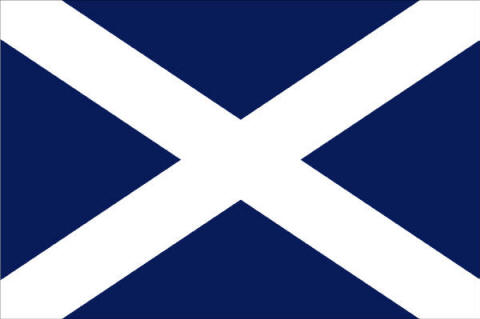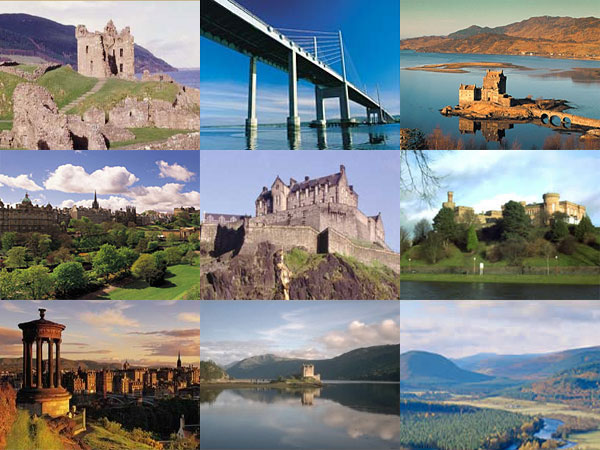Login form
Customs of Scotland
Marriage and Family
 People usually marry in their middle to late 20s. Many couples live together before or instead of marriage. Marriage customs are much the same as elsewhere in the United Kingdom.
People usually marry in their middle to late 20s. Many couples live together before or instead of marriage. Marriage customs are much the same as elsewhere in the United Kingdom.
Early families living in the Scottish Highlands were loyal to their clan, a unit that bound together relatives sharing a common ancestor or some other bond of loyalty. However, clans have less importance in the lives of individual family members today. Each clan is still headed by a chieftain, but the position is mainly symbolic. Contemporary members of a clan may make efforts to preserve its traditions and history. Each clan is represented by a tartan, a distinctive plaid pattern.
In rural areas, the extended family can still be important, but in urban areas families tend to be small and generally close-knit. Although relatives visit each other often, families are independent from each other. The elderly prefer to stay in their own homes and remain independent as long as possible, rather than live with their married children. Just over half of all homes are owner occupied, the lowest level in the United Kingdom.
Eating
 The traditional breakfast includes porridge (oats mixed with boiled milk or water and served with sugar or, more properly, salt). Many people now prefer other cereals to porridge and have forsaken a cooked meal in the morning. A wide variety of meat and fish is available, and the Scots eat many foods found elsewhere in Europe and other parts of the world. The Indian restaurants in Glasgow are particularly well respected. Traditionally, the Scots have favored wholesome meals such as stews, eaten with vegetables such as neeps (turnips) and tatties (potatoes). The national dish is haggis, which is made from ground sheep entrails, mixed with oats and spices, and tied in a sheep’s stomach and cooked. Younger Scots typically eat less of this traditional fare. The national drink is whiskey (spelled "whisky" in Scotland), the production of which contributes significantly to the economy.
The traditional breakfast includes porridge (oats mixed with boiled milk or water and served with sugar or, more properly, salt). Many people now prefer other cereals to porridge and have forsaken a cooked meal in the morning. A wide variety of meat and fish is available, and the Scots eat many foods found elsewhere in Europe and other parts of the world. The Indian restaurants in Glasgow are particularly well respected. Traditionally, the Scots have favored wholesome meals such as stews, eaten with vegetables such as neeps (turnips) and tatties (potatoes). The national dish is haggis, which is made from ground sheep entrails, mixed with oats and spices, and tied in a sheep’s stomach and cooked. Younger Scots typically eat less of this traditional fare. The national drink is whiskey (spelled "whisky" in Scotland), the production of which contributes significantly to the economy.
The Scots generally eat three meals a day. Most younger people eat their main meal in the evening, while older Scots may have it in the middle of the day. The evening meal, particularly if it is eaten quite early, is sometimes called tea.
Socializing
A handshake is usual when people are introduced, and standard English greetings such as “Hello” and “How do you do?” are common. More informal greetings among friends include “All right?” and, in the north, “Fit like?,” to which the response is Nae sae bad (“Not so bad”), or “All right.”
In Scotland, visits to the home are usually prearranged. Only close friends and family drop by unannounced.
Recreation
The most popular organized sport is soccer, followed by rugby, but a wide range of sports are enjoyed. Many people play golf, which was devised in Scotland in the 14th or 15th century, and the country has many excellent courses. Scotland is also famous for its fishing. Winter sports include curling (in which two teams of four players slide granite “stones” over ice to reach a target) and skiing. Scotland is the only part of the United Kingdom where it is possible to ski, although the snow conditions are not that reliable.
Highland Games are held in many parts of the Scottish Highlands during the summer. They are a traditional kind of track and field meeting where the events include tossing the caber (a roughly trimmed tree trunk) and throwing the hammer (a heavy metal ball attached to a chain). Participants often wear traditional dress, and musicians play traditional bagpipe music.
Watching television and going to the cinema are also favorite leisure activities. Pubs—public houses that serve alcoholic beverages and sometimes food—are probably the most popular venues outside the home for socializing.
Holidays and Celebrations
 Scotland’s national holidays are slightly different from those in England and Wales. They include New Year’s Day (1 January), Good Friday (the Friday preceding Easter), May Day (the first Monday in May), Spring Bank Holiday (the last Monday in May), August Bank Holiday (the first Monday in August), and Christmas Day (25 December). New Year’s Eve (Hogmanay) is when some of the year’s most lively celebrations take place.
Scotland’s national holidays are slightly different from those in England and Wales. They include New Year’s Day (1 January), Good Friday (the Friday preceding Easter), May Day (the first Monday in May), Spring Bank Holiday (the last Monday in May), August Bank Holiday (the first Monday in August), and Christmas Day (25 December). New Year’s Eve (Hogmanay) is when some of the year’s most lively celebrations take place.
Traditionally, on Hogmanay, children would go to the doors of their neighbors, and sing and cry out “Hogmanay!” to receive oatmeal cakes in return. Another tradition associated with New Year’s Eve is the “first-footer,” or the first person to cross the threshold of a home after midnight on New Year’s Eve. If the first-footer is a dark-haired man carrying presents, the family should have good luck for the rest of the year. The song “Auld Lang Syne,” by beloved Scottish poet Robert Burns, is sung on New Year’s Eve.
Many Scots honor Burns’s birthday (25 January) by celebrating his life and works at Burns Suppers, where haggis is served. Saint Andrew’s Day, on 30 November, honors the patron saint of Scotland. Some Scots wear a blue-and-white X on this day to symbolize the cross upon which Saint Andrew was crucified by the Romans. This X-shaped cross has become a patriotic symbol.
There has been a recent revival in the popularity of wearing kilts on special occasions. Men might wear them for events such as graduations, weddings, or Hogmanay.
Source: Encarta Interactive World Atlas

